California is the third-largest and one of the most diverse States in the United States. From the dry and arid landscapes in Southwestern California to coastal landscapes around the largest cities of the state to cooler and higher-altitude areas to the north. Due to this natural diversity, the state of California is home to more spider species than any other state in the U.S.
Of the 67 spider families with thousands of species, 59 families are found in California. Fortunately, almost all spiders that you can find in California are harmless for humans or pets – the few potentially dangerous species are rare and relatively easy to identify.
Table of Contents
Now available: The USAspiders California spider identification book – available as an ebook here or as a printed paperback on Amazon. Written in a simple, non-scientific language with illustrations, tips & tricks and identification sheets.
California poisonous spiders
Almost all spiders in the world are venomous. However, their main prey are insects and other small animals – therefore, the venom of most spiders is not strong enough to cause any serious effects on humans or larger pets. Usually, a spider bite leads to symptoms comparable to a bee sting with mild pain, local swelling and redness.
In California, two types of spiders are considered medically significant. That means that their bites can lead to symptoms that require medical attention. These spiders are western black widows (Loxosceles hesperus) and recluse spiders.
Black widows
Western black widows can come in a range of colors since they change their appearance as the reach maturity. Please note that only the adult female black widow is able to deliver medically significant bites – bites of juvenile and male widows may be uncomfortable but do usually not require medical attention. The adult female western black widow has a completely black and shiny body with an orange or red hourglass-shape at the bottom.

To learn more about the western black widow, follow the link below.
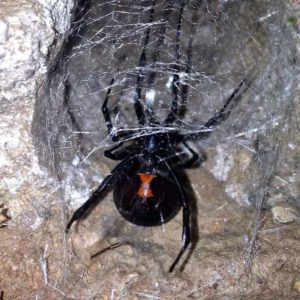
Latrodectus Hersperus – Western Black Widow
Recluse spiders
Even though this spider has a very bad reputation and sightings are commonly reported, recluse spiders are very rare in California. The desert recluse, as its name says, lives in mostly uninhabited locations, and the Chilean recluse is only found in a few limited areas of Southern California. And hasn’t been able to establish sizeable populations. The most common recluse spider in the United States, the brown recluse, is not found in California.
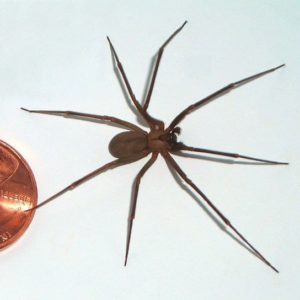
Loxosceles reclusa – Brown Recluse
Are hobo spiders found in California?
Hobo spiders (Eratigena agrestis) are found in the Pacific Northwest of North America. They are occasionally found in California’s far north. However, despite their bad reputation, to date, no recorded verifications by a certified arachnologist (spider expert) have been made.
The hobo spider has sparked fears throughout the U.S. because its bites were thought to lead to cause necrosis (rotting flesh), like some rare dramatic bites of brown recluse spiders. However, it has been proven that hobo spiders are not dangerous for humans and that their bad reputation came from wrongly interpreted lab results in the 1980ies.
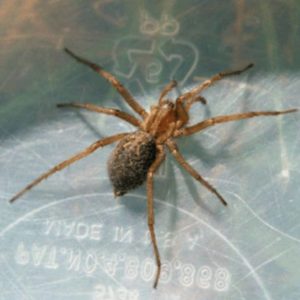
Eratigena Agrestis – Hobo Spider
Big brown spiders in California
Around one in three Americans is suffering from arachnophobia – the fear of spiders. The bigger, the greater the fear. Maybe we can comfort you in telling you that none of the big brown or black spiders found in the sunshine state are medically significant.
Here is a quick overview of the most common brown spiders you may find in or around your home. Most of the ID requests we receive are from wolf spiders.
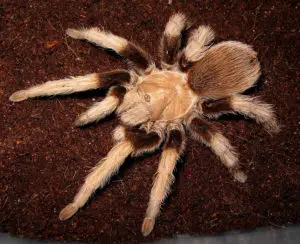
Aphonopelma chalcodes – Arizona blonde tarantula
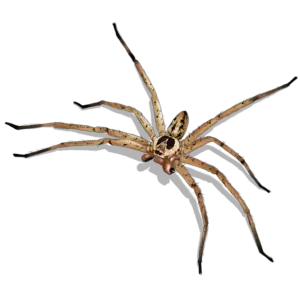
Heteropoda venatoria – Pantropical huntsman
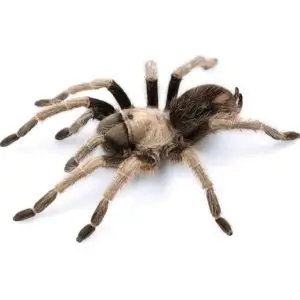
Aphonopelma Eutylenum – California Ebony Tarantula
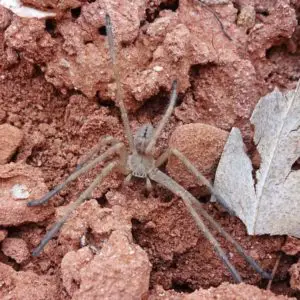
Olios Giganteus – Giant Crab Spider

Eratigena Agrestis – Hobo Spider
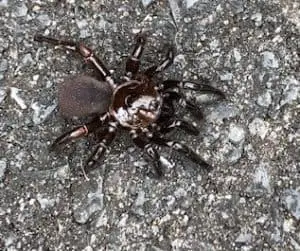
Ummidia – Trap-Door Spider
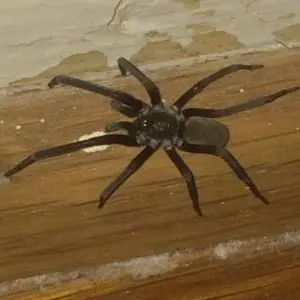
Kukulcania Hibernalis – Southern House Spider
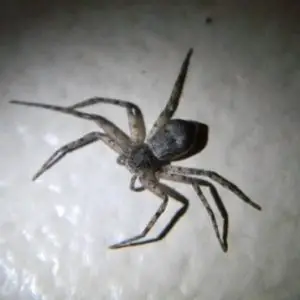
Philodromus – Running Crab Spider
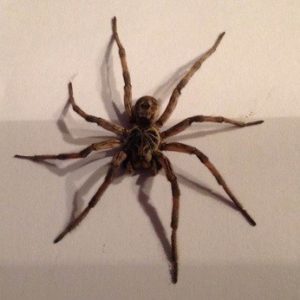
Lycosidae – Wolf Spider
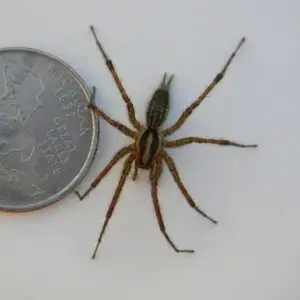
Agelenopsis – American Grass Spider

Dolomedes – Fishing Spider
Common house spiders in California
The term “house spider” is not a scientific definition or classification of spiders. Several spiders that are commonly found in buildings are referred to as such. Some of the most common California house spiders are cobweb spiders, also called false widow spiders (Steatoda) or cellar spiders. These spiders build erratic tangle webs in corners, dark cupboards or basements to catch small insects.
The list below introduces you to some more common spiders that are commonly observed inside people’s home.
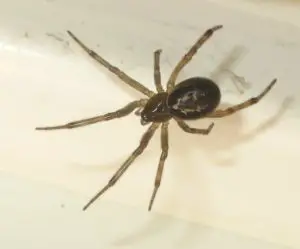
Steatoda nobilis – Noble False Widow
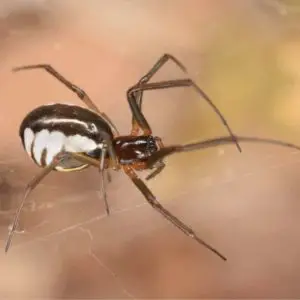
Frontinella Pyramitela – Bowl and Doily Spider
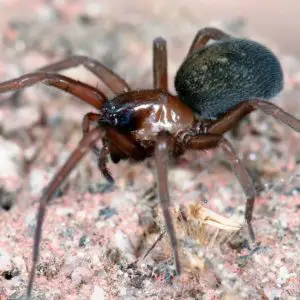
Metaltella Simoni – Hacklemesh Weaver
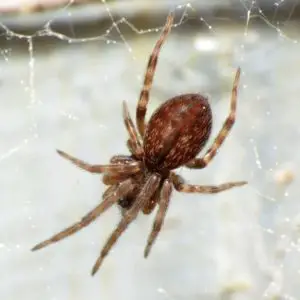
Gray House Spider – Badumna Longinqua
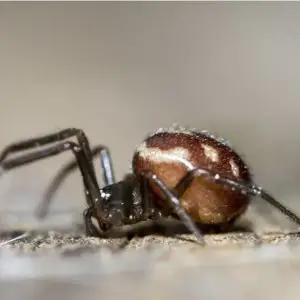
Steatoda Grossa – False Black Widow Spider

Latrodectus Hersperus – Western Black Widow
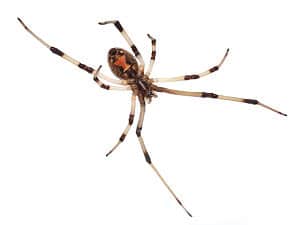
Latrodectus Geometricus – Brown Widow
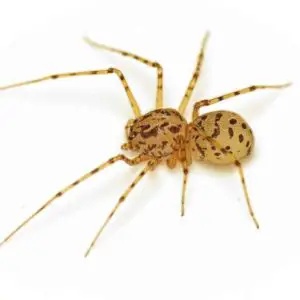
Scytodes Thoracica – Spitting Spider
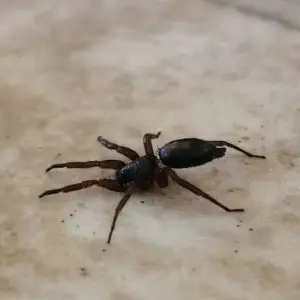
Herpyllus Ecclesiasticus – Eastern Parson Spider
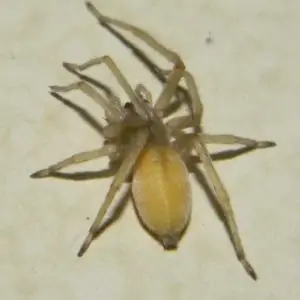
Cheiracanthium Mildei – Northern Yellow Sac Spider
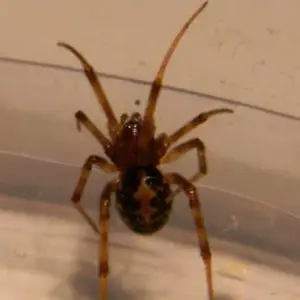
Steatoda Triangulosa – Triangulate Cobweb Spider
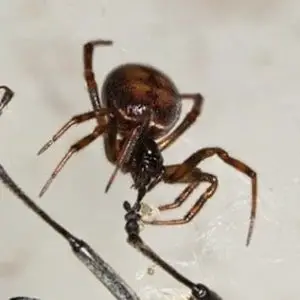
Steatoda Bipunctata – Rabbit Hutch Spider
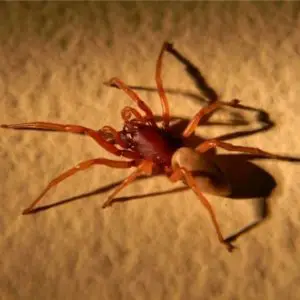
Dysdera Crocata – Woodlouse Spider
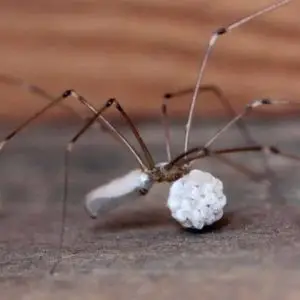
Pholcidae – Daddy Long-Legs or Cellar Spider
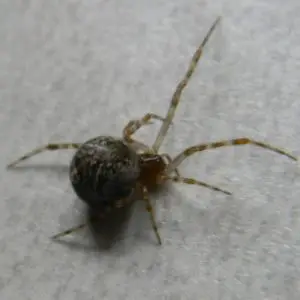
Parasteatoda tepidariorum – The Common House Spider
Orb weavers
If you head out into your backyard, you will encounter completely different spiders. They often spin large circular webs to catch flying insects. These spiders are called orb-weavers. Even though their webs can sometimes become a nuisance, these spiders are not dangerous and they catch annoying flying insects and pests. Some of the most common species, like the black and yellow garden spider can be colorful and fun to identify. Check our the most common CA orbweavers here:
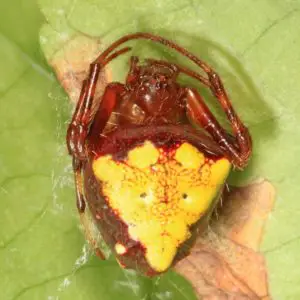
Verrucosa Arenata – Arrowhead Spider
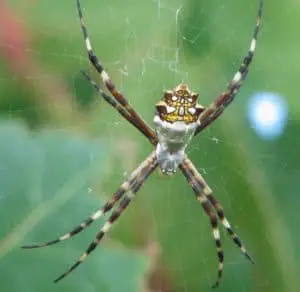
Argiope Argentata – Silver Garden Spider
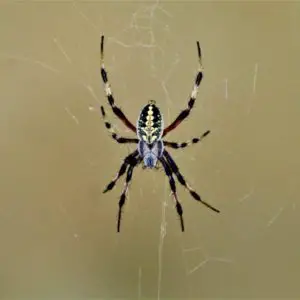
Western Spotted Orb Weaver – Neoscona Oaxacensis
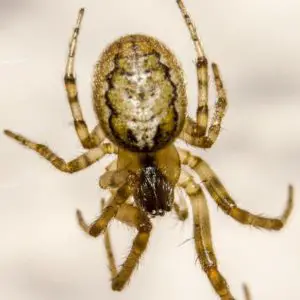
Missing Sector Orb Weaver – Zygiella X-Notata

Tropical Orb Weaver – Eriophora Ravilla
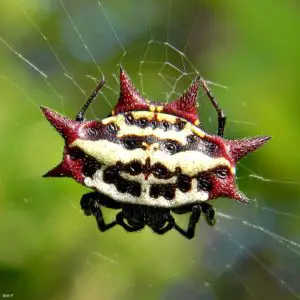
Gasteracantha Cancriformis – Spinybacked Orb Weaver
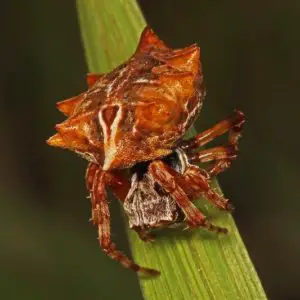
Acanthepeira Stellata – Starbellied Orb Weaver
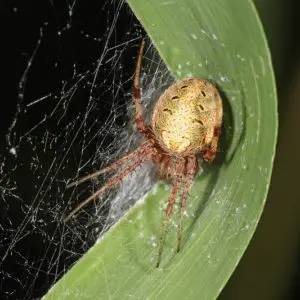
Neoscona Arabesca – Arabesque Orb Weaver
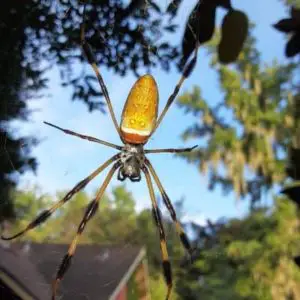
Trichonephila Clavipes – Banana Spider
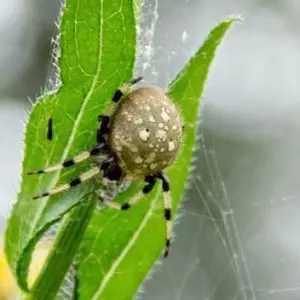
Araneus Trifolium – Shamrock Spider
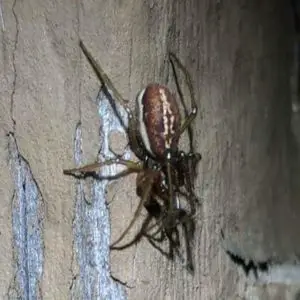
Pachygnatha
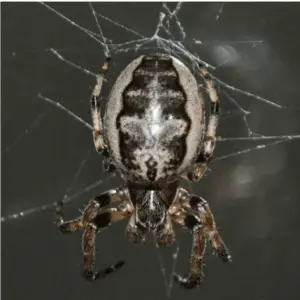
Larinioides Cornutus – Furrow Spider
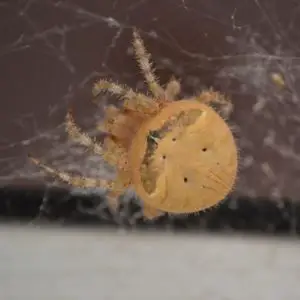
Araneus Gemmoides – Cat-Faced Spider or Jewel Spider
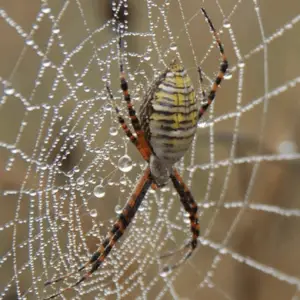
Argiope Trifasciata – Banded Garden Spider
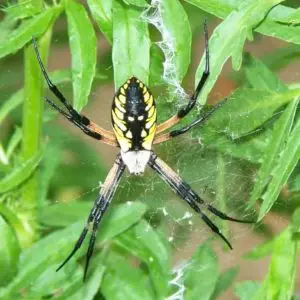
Argiope Aurantia – Black and Yellow Garden Spider
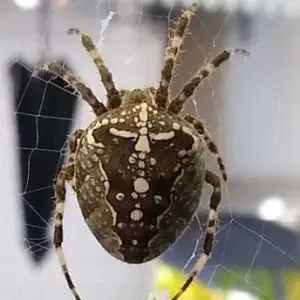
Araneus diadematus – The European Garden Spider
Jumping spiders
Salticidae, or jumping spiders, are one of the largest spider families with over 600 identified genera and over 6,000 described species. As their common name suggests, these spiders have the ability to make huge sudden jumps – of distances up to 45 times their own body size.
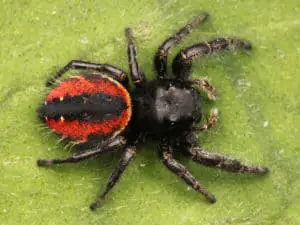
Phidippus Johnsoni – Red-Backed Jumping Spider
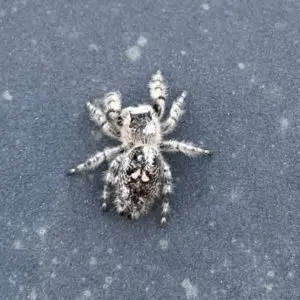
Phidippus Regius – Regal Jumping Spider
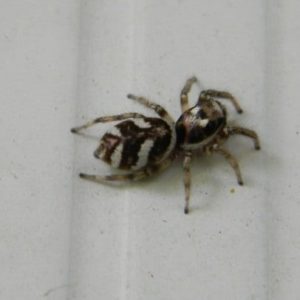
Salticus Scenicus – Zebra Spider
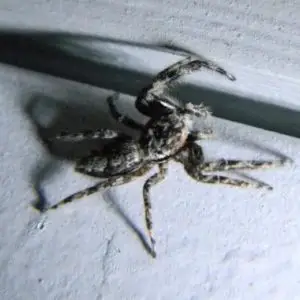
Menemerus Bivittatus – Gray Wall Jumper
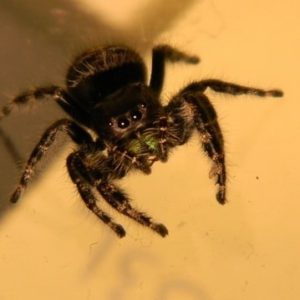
Phidippus audax – Daring Jumping Spider
Other common California spiders
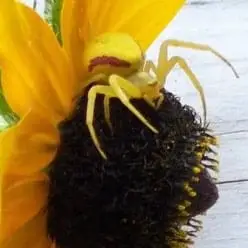
Misumena – Flower Crab Spider
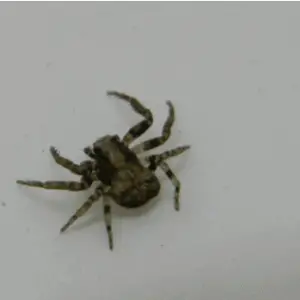
Xysticus – Ground Crab Spider
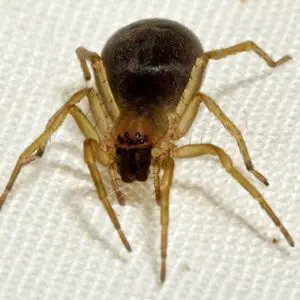
Clubiona – Leaf-Curling Sac Spider
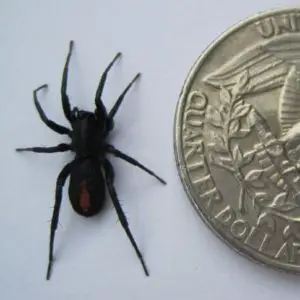
Castianeira Descripta – Red-Spotted Ant Mimic Spider

Kukulcania Hibernalis – Southern House Spider
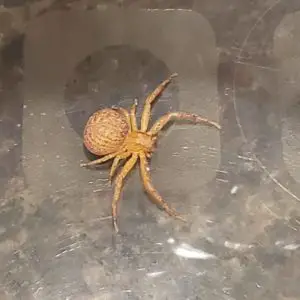
Xysticus Funestus – Deadly Ground Crab Spider
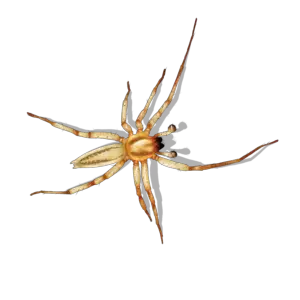
Hibana – Ghost Spider
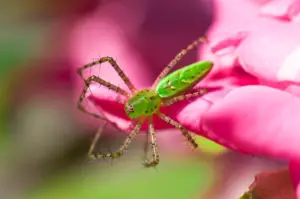
Peucetia viridans – Green Lynx Spider
California spider identification
If you’ve discovered a spider in California that is not listed here or that you cannot identify, go to our spider identification page for help. We created a spider identification tool that allows you to answer a few questions. The identification tool will generate a list of possible matches of what type of spider you encountered. If that doesn’t help you identify your California spider, you can instead take a picture of it and upload it to that page. Our spider specialists will do their utmost to identify the spider and contact you as soon as they finally identify what spider you have encountered.
Do you want to learn more about spiders in California? Check out our California spider identification guide ebook or the paperback version on Amazon – the best California spider identification book out there!
